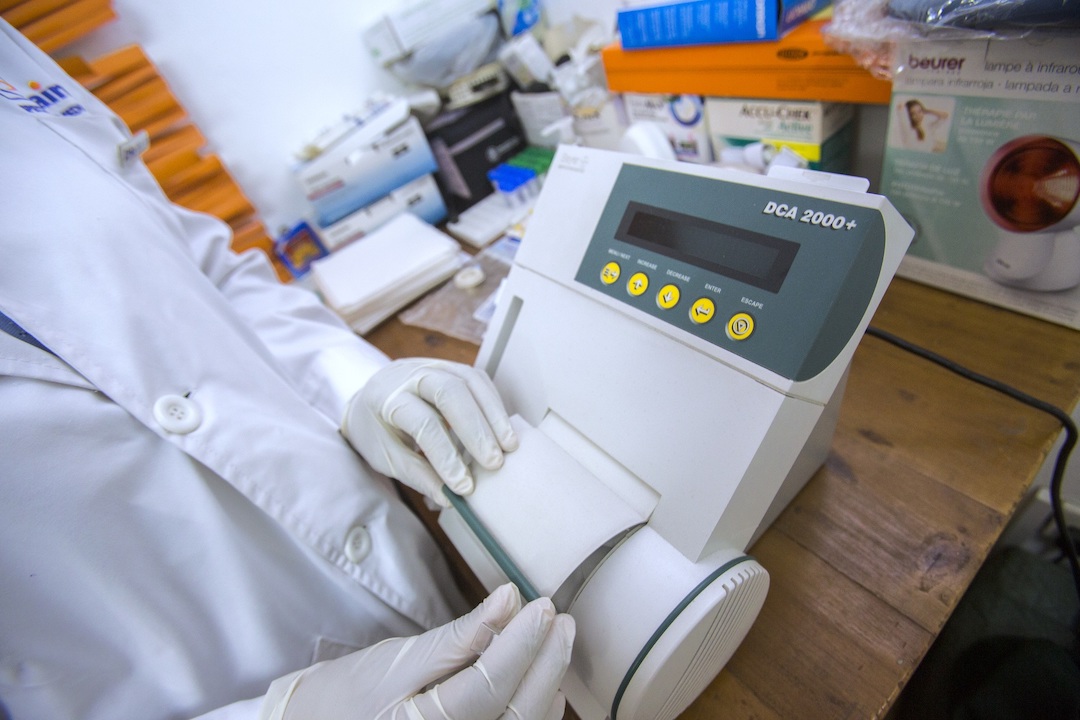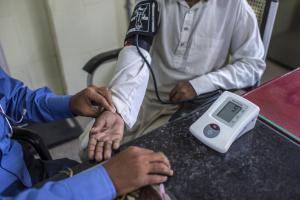Addressing noncommunicable diseases
Dar es Salaam ‒ For four months Stella Fikiri underwent a variety of tests at several private health care institutions, before finally being diagnosed with diabetes at the Magomeni Public Health Facility in Kinondoni, a district in Tanzania’s commercial capital Dar es Salaam. Now she attends the clinic for check-ups every two months, reducing her blood sugar levels from 9.1 to 7.1 in just eight weeks.
Fikiri’s success reflects concerted efforts by Tanzania’s Ministry of Health, in collaboration with World Health Organization (WHO) and other partners, to make services to treat chronic diseases like diabetes routinely accessible at primary health care level. Chronic diseases are responsible for more than one-third of all deaths in the country.
“I do everything I am advised to do, and I am seeing results.” Stella Fikiri, person with diabetes
Although Tanzania’s Muhimbili University of Health and Allied Sciences hosted its first diabetes clinic in the 1970s, triage desks at secondary and primary care health facilities have long been ill-equipped to treat diabetes and hypertension. Outreach services also never incorporated screening for noncommunicable diseases (NCDs).
That all changed in 2013, when the Tanzania Diabetes Association, in collaboration with WHO and partners, introduced WHO’s package of NCD interventions (WHOPEN) into national NCD desk guides and staff training manuals. This was followed, in 2022, by the integration of WHO’s technical package for cardiovascular disease management at primary care level, called HEART, into the national guidelines.
“This has really helped to boost the package of interventions for people with NCDs,” says Dr Alphoncina Nanai, WHO Tanzania’s NCD focal person.
“Noncommunicable disease services at primary health care facilities have significantly boosted early detection rates, and decreased cost of care for both providers and clients.” Dr Omar Ubuguyu, Ministry of Health, Tanzania
The government has now established diabetes and hypertension services in more than 702 facilities in the country’s 26 regions. A total of 2092 health care workers have also received training to care for people with NCDs, specifically diabetes and heart disease, which are the two most common chronic diseases in Tanzania.
This has led to a more than two-fold increase between 2017 and 2022 in the number of people who received care for hypertension, from around 688 000 to around 1.4 million.
Dr Saumu Sheni, who runs diabetes and hypertension clinics at the Magomeni Health Facility every Thursday, says the barriers to health services for NCDs at primary health facilities prior to the introduction of WHOPEN allowed the country’s burden of disease to burgeon.

“Now we have protocols that provide clear steps on how to manage NCD clients and follow them up, and I am much more confident about advising clients about their diet and physical activity,” she says.
Dr Omar Ubuguyu, Director of NCD services in Tanzania’s Health Ministry says: “NCD services at primary health care facilities have significantly boosted early detection rates, and decreased cost of care for both providers and clients.
“There are now NCD coordinators at regional and district level who coordinate activities in their respective areas,” he adds.
Fikiri’s improvement is indicative of what this progress means for affected people. “I keep track of my numbers in a notebook that the hospital gave me. I do everything I am advised to do, and I am seeing results,” she says.
Communications and Media Officer
WHO Country Office, United Republic of Tanzania
Tel:+255 22 2111718/2113005
Mobile:+255 743 958599
Email: mwijarubim [at] who.int
Media Relations Officer
WHO Regional Office for Africa
Email: dalalm [at] who.int
Tel: +254 703 245 761 (WhatsApp)
